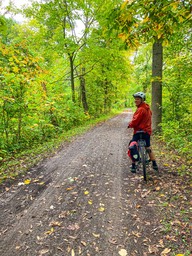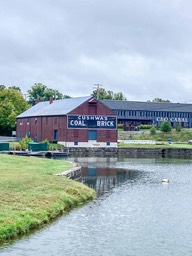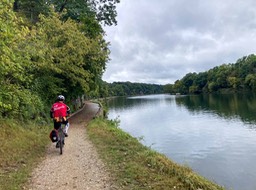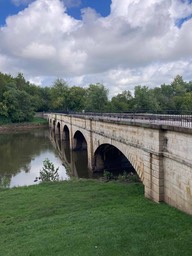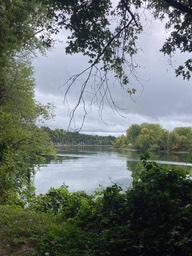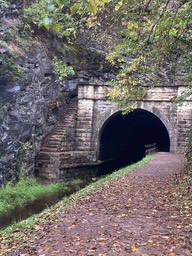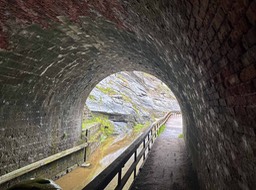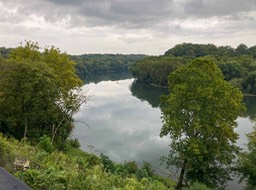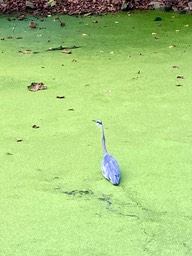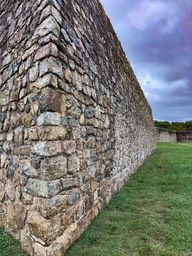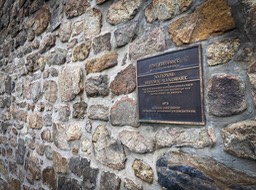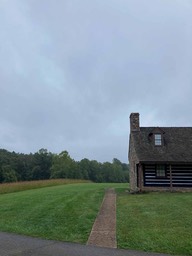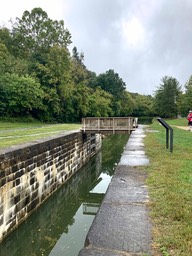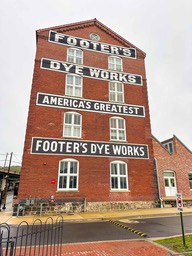A bike trip along The C&O Canal Towpath is a journey back in time. The canal was begun in 1828 and finished twenty-two years later. Canal boats, pulled by mules, transported huge amounts of coal, lumber, grain and other products to market between Washington DC and Cumberland, Maryland. For more than a century, the canal was a lifeline for communities along the Potomac River in Virginia, Maryland and West Virginia.
We biked along the C&O Towpath through beautiful broadleafed forests. In some places the canal was still filled with water, cattails and water lillies lining its shores. In other areas the canal was dry, filled over decades with trees and shrubbery. We rode past beautiful stone aqueducts, locks, and lockkeepers' cottages preserved by the National Park Service. One of the most memorable moments was walking our bikes through the Paw Paw Tunnel, drilled a half a mile through the mountains.
The towpath winds next to the Potomac River for 184 miles. The river was often in sight and in September, so were lush green fields with recently baled hay. We had several days of rain, as we splished, splashed along the dirt and crushed limestone trail. On our ride we saw lots of wildlife including: deer, herons, wild turkeys, and turtles.
The C&O canal system declined in the early 20th century, as railroads replaced canals for transporting people and goods. In 1954, Supreme Court Justice William Douglas took an eight-day hike on the old towpath, calling for its preservation. The publicity from his trip led to the creation of the C&O Canal National Historical Park in 1971. On our final day, we pedaled fifty-five miles into Washington DC, dodging hundreds of hikers, bikers, and joggers enjoying a sunny weekend day on the C&O.
Click on any of the photo thumbnails below to see the full size photos from the C&O Canal Towpath Trail.
